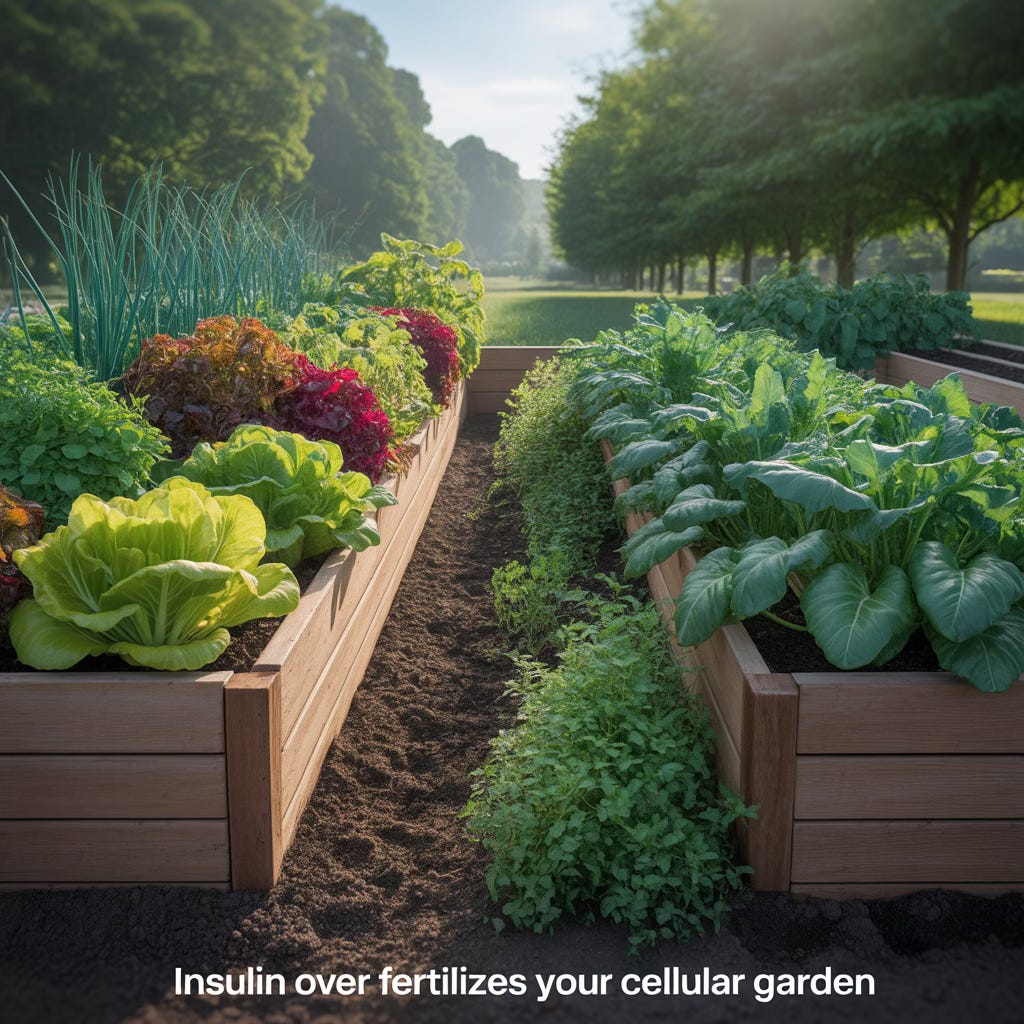The $10 Test Your Oncologist Isn’t Ordering
It's not the standard of care but it can help
You’re sitting in the oncology waiting room, labs in hand. Your A1C came back at 5.7 - technically “normal.” Your fasting glucose looks fine. Everything’s in the reference range.
But what if those reference ranges are lying to you?
Dr. Mary Ann Martin is an endocrinologist who treats cancer patients - and she was never taught the connection between insulin and tumor growth during her entire medical training. A hormone specialist, 20 years out of medical school, discovered that insulin acts like fertilizer for cancer cells. Use a little, great. Use too much? Dangerous weeds start growing.
One in three Americans is pre-diabetic right now. Eighty percent don’t know it. And the reason they don’t know it? They’re only being tested with glucose and A1C.
The test that actually predicts future diabetes seven to ten years earlier costs ten dollars. It’s called fasting insulin. And it’s ordered less than 10% of the time.
Here’s what makes this personal: When you’re in treatment, everything conspires to spike your glucose.
The steroids they give you to manage side effects can raise your blood sugar by 50 points or more - and it takes four to six weeks after you stop them for your levels to normalize.
Meanwhile, you’re eating crackers and drinking ginger ale to manage nausea.
Your stress hormones are firing.
Your body is creating exactly the metabolic environment where cancer thrives.
Dr. Martin’s approach isn’t about deprivation. It’s about smart hacks:
A cracker with fiber instead of a saltine (almond flour, anyone).
Ginger tea instead of ginger ale.
A 10-minute walk after dinner that brings glucose back to normal faster than you’d believe.
Two things you can do this week:
First, before your next blood draw, ask your doctor to add fasting insulin to your panel. You’re looking for a number below nine - ideally below five. If they push back, tell them you listened to a podcast about the links between glucose and cancer and want to be proactive. I found my cardiologist and oncologist couldn’t even order this test, but my primary care physician could add it to the order.
Second, try the post-meal walk experiment just 10-15 minutes of brisk walking after your biggest meal. If you can’t walk, Dr. Martin says even a few minutes of deep squats can drop your glucose by up to 50 points.
The bigger question this raises: If insulin resistance drives inflammation, and inflammation drives cancer, and 80% of pre-diabetics don’t know they’re pre-diabetic - how many people are creating a hospitable environment for cancer without any warning?
The full episode goes deeper into hormone replacement therapy (major news dropped from the FDA on November 10, 2025), continuous glucose monitors as “visible motivation,” and why the “sugar doesn’t feed cancer” debunkers should tell you who funded their studies.



